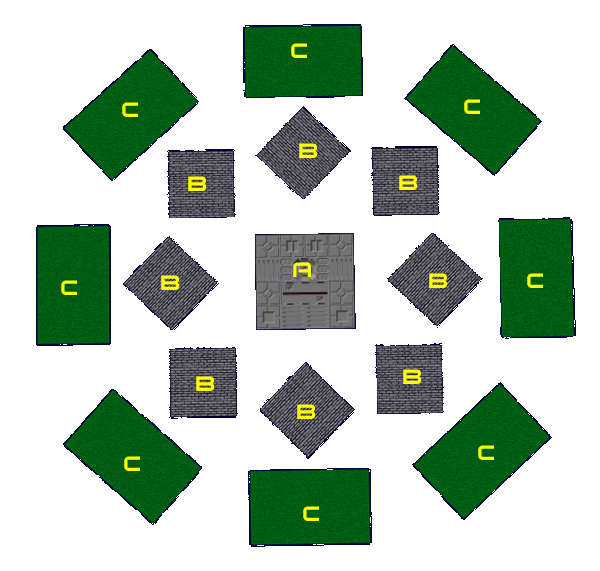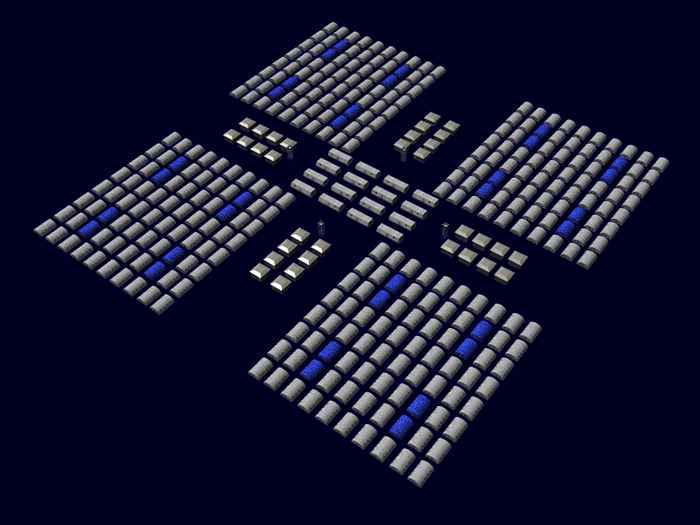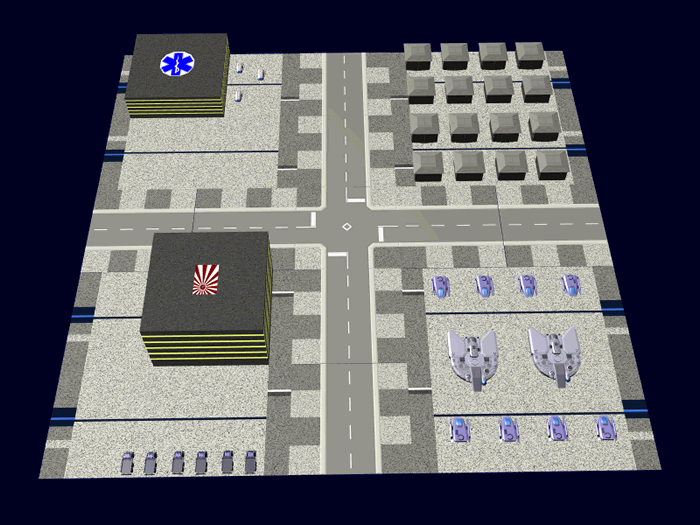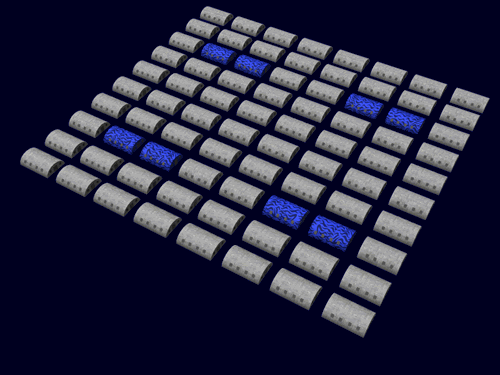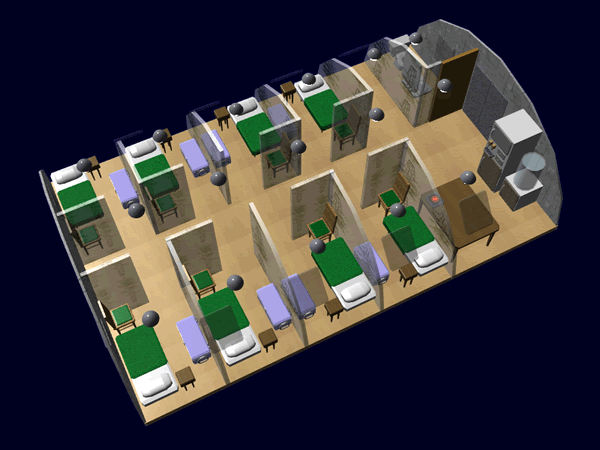Table of Contents
Star Army Refugee Facilities
With the evacuation of various star systems as a result of the Second Mishhuvurthyar War, the Star Army of Yamatai found itself needing facilities to process and house these transient populations. The Refugee Town and Camp became available in YE 33. Most components are created at the Virginia Fleet Depot.
During processing each individual is issued a Star Army Survivor Kit, Type 33, without the Four Person Type 30 Portable Shelter (Civilian).
History
the Star Army Refugee facilities were called upon once again in YE 44 because of the Arrival of the Norians.
Town
Towns are designed to handle a population of 18,400 people. These areas serve as the logistics point in the supply chain for Refugee facilities.
Towns consist of the following components:
- 1 Control Complex
- 8 Camps, arranged in a octagon with each one five kilometers away.
- 8 Farms for augmenting food supply
- A - Control Complex
- B - Camps
- C - Farms
Camps
Each camp is designed to handle a population of approximately 2,300 people.
The camp is constructed of the following components:
- 320 Ke-P5-11 - POM Quonset Huts broken into four neighborhoods.
- 32 Ke-P5-07 - POM Vehicle Unit for storage
Control Complex
The Control Complex is responsible for management and oversight of the refugees in its territory. All refugees must pass through the Control Complex which includes a medical screening to ensure none of the refugees are infected by parasites.
The control complex has the following facilities.
- A dedicated Hospital Center
- Aerospace craft landing field for EVAC
- Security (Star Army of Yamatai personnel charged with security)
- Management
- Housing for the personnel working in the complex.
- A Small Spaceport for supply and personnel transport.
Quonset Neighborhoods
These are the housing for the refugees. There are eighty huts in each neighborhoods. They are referred to as Alpha, Beta, Gamma and Delta, though once the refugees are settled they are typically re-designated to values the residents choose. Eight of the huts are configured as bath house with showers. The bath houses are segregated by gender. They are positioned so that any hut is no more than two huts away from the baths.
Each housing unit is designed for up to eight occupants. The rooms have eight 'rooms' created by privacy screens and a curtain covering the doorway. There is a single bed/cot, a small table and chair a lamp in each room. The Star Army Survivor Kit, Type 33 can be stored at the foot of the bed, under it or against the wall. There is also Ke-T8-M3102 Comfort Module which provides refrigeration and potable water. A small water reservoir is installed next to the module. The large bottle can be removed and refilled. There is a small bathroom with a chemical toilet at the end of the hut. Toilet is serviced from outside the hut.
Storage Areas
Located between the neighborhoods are eight large structures. This is where perishable and non-perishable supplies are stored. Inhabitants are allowed to requisition their share of stuff twice a day. The rest of the time the structures are secured to prevent theft or looting.
CRDM Farm
At the heart of each camp are sixteen Collapsible Rapid Deployment Modules. They provide facilities for the inhabitants of that camp. They consist of the following:
- 4 Ke-P1-04a - Kitchen / Scullery to provide two hot meals a day
- 1 Ke-P1-01a - Unconfigured equipped with the following
- 5 Ke-J1-E3102 - Autonomous Basic Medicine Unit (ABMU) acts as a clinic
- 2 Ke-P1-06a - Workshop for repairs
- 1 Ke-P1-01a - Unconfigured for the following
- Star Army Alterations and Embroidery to maintain refugee clothing.
Gardens / Farms
Beyond each Camp the Star Army of Yamatai prepared a large tract of land. Along the edge of the tracts a number of storage structures were erected. These contain seeds, and equipment for growing produce. The farms are worked by members of the camp closest. This was done so the Refugees would be able to assist with their own self-sufficiency, and expand their dietary fare. This also helps lift some of the burden from the Star Army Logistics.
Life in the Camp
The camps were designed to allow the residents to maintain a sense of community and their self esteem. The residents are provided the basic amenities needed to live. The Star Army chose to have the inhabitants of the camps work in their camps. They are responsible for working in the kitchens, laundries as well as repairing and servicing equipment. The residents are expected to work and harvest the farms created for them. Giving the refugees jobs was thought to also help maintain their self-respect.
Major Deployment Locations
To date, large numbers of refugee towns have been built in the following locations:
- Akina System (closed in YE 38, reopened in YE 44 due to the Arrival of the Norians)
- Daichi (closed by YE 38)
- Ronica (Planet) (closed by YE 38)
- Valentine (closed by YE 38)
- Planet Himiko (closed in YE 41)
- Forge (closed in YE 36)
- Kilnar (closed in YE 38)
- Yamatai (Planet) (closed in YE 38)
